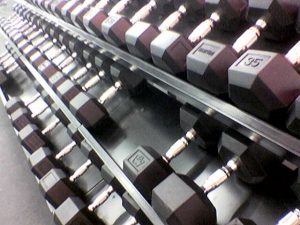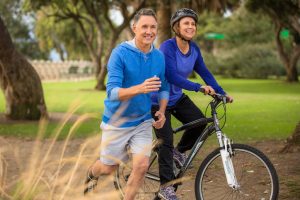What is the Big Fuss About Bone Mineral Density?
Bone Mineral Density (BMD) depicts an overall profile of your bone health. The U.S. Preventative Services Task Force recommends that all women over 65 years old to get a central DXA test. It is painless—a bit like having an x-ray. The test can measures bone mineral density at your hip and spine, two of the most common areas for bone breakdown. BMD naturally decreases as we age but it is modifiable based on many different factors. The exercise recommendations in this article are sure to jump start your bone health, no matter your age.
Low BMD is correlated with:
- Bone loss: Indicators for bone loss can be picked up on the DXA test. Your doctor will discuss additional risk factors for osteoporosis. At this stage there is nothing to worry about, but to encourage healthy habits such as exercise along with eating foods rich in calcium and vitamin-D.
- Osteoporosis: Your BMD score is considered “osteoporotic” compared to the young adult mean. The more deviation away from the mean average, the further the progression of osteoporosis. Your treatment approach considers a variety of factors including hereditary, other medical conditions, and activity level.
- Fracture: If your DXA test reveals osteoporosis you are more susceptible to a fracture. The more risks of fracture you have the more likely you are to suffer from a bone fracture, especially following a fall or with joint arthritis. The exercise recommendations below is your key to preventing further bone loss.
Exercise and Bone Mineral Density’s Complicated Relationship
Cummings et al suggested that, in adults, for every 1 standard deviation in hip BMD preserved, hip fracture risk decreased by approximately 2.6 times. That means your BMD is not destined to decline, you can still increase her BMD profile over time.
Impact? Resistance? Aerobic? Which Exercise is Best?
If we think of BMD as a profile for bone health, that profile can change based on the exercise stimulus we provide it. Site-Specificity is the name of the game here. That means if you walk you’ll strengthen the bones of the ankle and knee. If you perform upper-body resistance exercise you will develop the bones of the wrists, elbows, and shoulders. This is an excellent positive effect for those joints on the periphery, but the most common sites of fracture are the lumbar spine and the hips. So that’s where we need to focus our exercise’s attention.
Site-specific exercise means site-specific BMD gains
Current evidence suggests that high-intensity resistance training frequently generates beneficial effects only on the spine. That includes circuit training and Orange Theory type exercise routines. This is a good start, but can we do better?
How To Apply These Recommendations to Your Exercise Routine
Combined exercise interventions are most effective in preserving postmenopausal women’s BMD at the lumbar spine, femoral neck, total hip, and total body. When you start a bout of exercise, aim for at least 30 minutes to promote positive BMD effects.
Combined exercise interventions encompass three different types of exercises to benefit bone health.
- Resistance training
- This includes free weights and weight machines
- Try to involve multiple joints with minimal rest breaks to keep the heart rate up.
- Impact exercise
- Plyometric training, jump rope, jogging
- Dynamic aerobic activities
- Aerobic activites alone (walking, running, cycling) have inconsistent results on BMD.
- aerobic exercise should be performed at an intensity where it would be difficult to hold a short conversation
Multi-Joint Movement + Elevated Heart Rate = Strong Bones!
For the most beneficial effect on bone mineral density start with combined exercise interventions. This means you need to switch it up! Engage in at least two different types of exercise (eg, resistance training and impact exercise), three times a week for 30 minutes minimum. Remember the site-specificity principle. If you load multiple bones and joints you generate various mechanical strains along multiple skeletal loading sites. That’s the bone hard truth!
CITATION
Cummings SR, Black DM, Nevitt MC, et al. Bone density at various sites for prediction of hip fractures. Lancet. 1993;341:72-75. https://doi. org/10.1016/0140-6736(93)92555-8
Kelley GA. Aerobic exercise and bone density at the hip in postmenopausal women: a meta- analysis. Prev Med. 1998;27:798-807. https://doi. org/10.1006/pmed.1998.0360
The information provided on this site is intended for your general knowledge only and is not a substitute for professional medical advice or treatment for specific medical conditions. You should not use this information to diagnose or treat a health problem or disease without consulting with Heather Lane Physical Therapy or another qualified healthcare provider.




